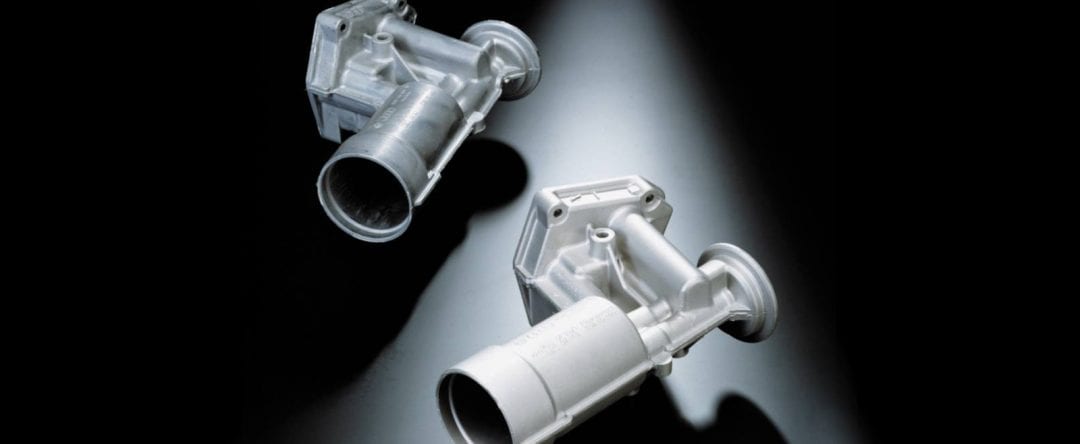The metal casting sector employs a number of various technologies to manufacture millions of component parts, in a cost-effective manner. Raw castings frequently require a surface preparation or finishing process such as deburring and edge breaking. Another important finishing process is the general cleaning and aesthetic finishing of the cast components and the removal of any remaining mould release agent.
The finishes demanded range from component aesthetics, keying the surface for adhesion before applying paint, coating or glue, to achieving a fine ‘pre-plate’ finish.
New alloys, re-defined casting methods and additive manufacturing spurn new process applications. All metals, including light alloys, super alloys, non-ferrous metals, to grey iron, steel and stainless steel castings are most likely to require and undergo a surface preparation and/or finishing process.
Many smaller aluminium, magnesium and zinc diecastings are finished in continuous vibratory systems. This is a wet process and depending on the subsequent operation may require a rinse or drying process. The removal of flash and the removal of sharp edges can be achieved within a processing time from as little as five minutes.
The majority of residual burrs caused by complex split mould tools can be removed, provided they could be reached by the grinding media.

There are a number of ways diecasting manufacturers can choose to go when looking to deburr and finish large numbers of components. Source: Rösler
Continuous vibratory systems from Rösler for instance are available as linear or circular – long radius systems and each system can be demonstrated in the company’s test process facilities. These surface preparations and finishing systems can be linked with the help of Rösler’s in-house specialist IT design team. This enables the equipment to be interfaced with the customer’s actual diecasting process and clipping cell, allowing an automatic and cost-effective finishing process.
Besides deburring and edge breaking the process offers a washing and cleaning effect. Rősler manufactures recycling systems to allow the re-use of the water/compound mix. As the Gemany headquartered company reports, this reduces water and compound consumption to a minimum and, with the addition of a wastewater centrifuge, the compound and water can be used over and over again before final discharge. This saves the user considerable cost for water and compound. Furthermore, it helps to keep the environment clean.

















